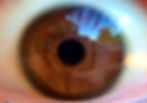EMDR formed an integral part of my healing. Although my healing process was multi-faceted, I attribute a hell of a lot of it to EMDR therapy and the expertise of my amazing therapist!
What is EMDR
EMDR was developed by a psychologist named Francine Shapiro in 1987 (1). Shapiro happened to notice her thoughts improved when she was walking through the woods one day and her eyes were darting from side to side. It evolved into a therapy for PTSD (post-traumatic stress disorder). While research is still limited, some studies have shown 84-90% success in curing PTSD for single event trauma (3). The extent and frequency of the traumatic events vary the number of sessions required.
The therapist uses devices, tapping or signals to make the eyes move from side to side as traumatic memories are recalled while focusing on body sensations. The therapeutic process is eight phases starting with history taking. The therapist ensures coping strategies before addressing the trauma while inducing eye movement, recognising body sensations, then rewiring negative beliefs (3).
How it works
Traumatic events can cause psychological and biological changes in the brain and body. Trauma causes a chronic state of hyperarousal that keeps the sufferer in a constant state of fight or flight. In addition, memories, dreams and associations of the trauma become intrusive and debilitating. When a memory is triggered, it causes the brain and body to believe the event is actually happening again, causing a somatic or biological response. At its worst, PTSD prevents individuals from carrying out normal life functions like maintaining relationships or working. However, the more research and practice of EMDR evolves, the broader the scope of benefits appears to be. Shapiro states in her book that even ubiquitous events as seemingly trivial as childhood humiliation or disappointment can be the foundations for significant adverse effects on our mental health (1). EMDR reclassifies and relocates the memories while rewiring negative thought patterns to positive and empowering ones. EMDR is not for everyone. Uncovering deep dark memories needs to be done carefully, skilfully and in a space where the client is fully supported and ready.
My experience
To be honest, I was pretty naïve to this therapy. I will say that you need to be prepared to sit with your shadow. This is deep work and very confronting at times. But as my buddy, Carl Jung says: "there is no coming to consciousness without pain".
My beautiful therapist starts the session with a quick update on how I've been travelling. We had been working together for several sessions before the EMDR, so she is aware of the background.
I am very good at visualising. Having worked with shamanic journeying for a while, the memories and visualisations come easily once we start the EMDR. I won't go into the details of the visions and memories that cropped up in my therapy. However, I can tell you that things from my life popped up in the most unexpected and random way possible.
She hands me two little wands that fit in the palms of my hands. They vibrate alternately. The intensity and frequency of the vibrations change as we go through the session, controlled by her. I close my eyes, and she guides me to my trauma. She works by gently and skillfully coaxing out the major issue. I turn my attention to my aching, tight throat and pain in my chest, like a combination of sharp knives and a squeezing that is starting to cripple my breathing. She tells me to focus on those feelings and breathe into them. The memories come thick and fast and I can see every detail in my mind's eye. After the first session, I really didn't feel much difference.
Carl Jung said, "Knowing your own darkness is the best method for dealing with the darkness of other people". It was pretty dark. I brought it into the light. I forgave myself and others in my life, and that was one of the most liberating moments of my healing journey.
I had a total of six EMDR sessions. The association of EMDR to REM sleep, the similarities to psychedelic therapy, my deep interest in lucid dreaming and shamanic healing have all led me to the conclusion and the unfaltering belief that: the soul wants to heal itself. The same way the body wants to heal. Our own minds (and that pesky prefrontal cortex) prevent us from healing due to the deep unconscious attempt to protect ourselves. EMDR is yet another example of how we can trick our minds into allowing the inevitable healing of our souls through silencing the human need for control.
EMDR undoubtedly changed my life. I recommend a good therapist, good preparation for the confronting nature of the therapy and, as always, surrender. Allow it all to come. Allow it all to leave. Surrender to the darkness and you will fall into freedom.
References
Shapiro, 2014. Eye movement desensitisation and reprocessing (EDMR): basic principles, protocols and procedures. Guildford publications
Bhandari, 2019. EMDR. Web MD. https://www.webmd.com/mental-health/emdr-what-is-it
